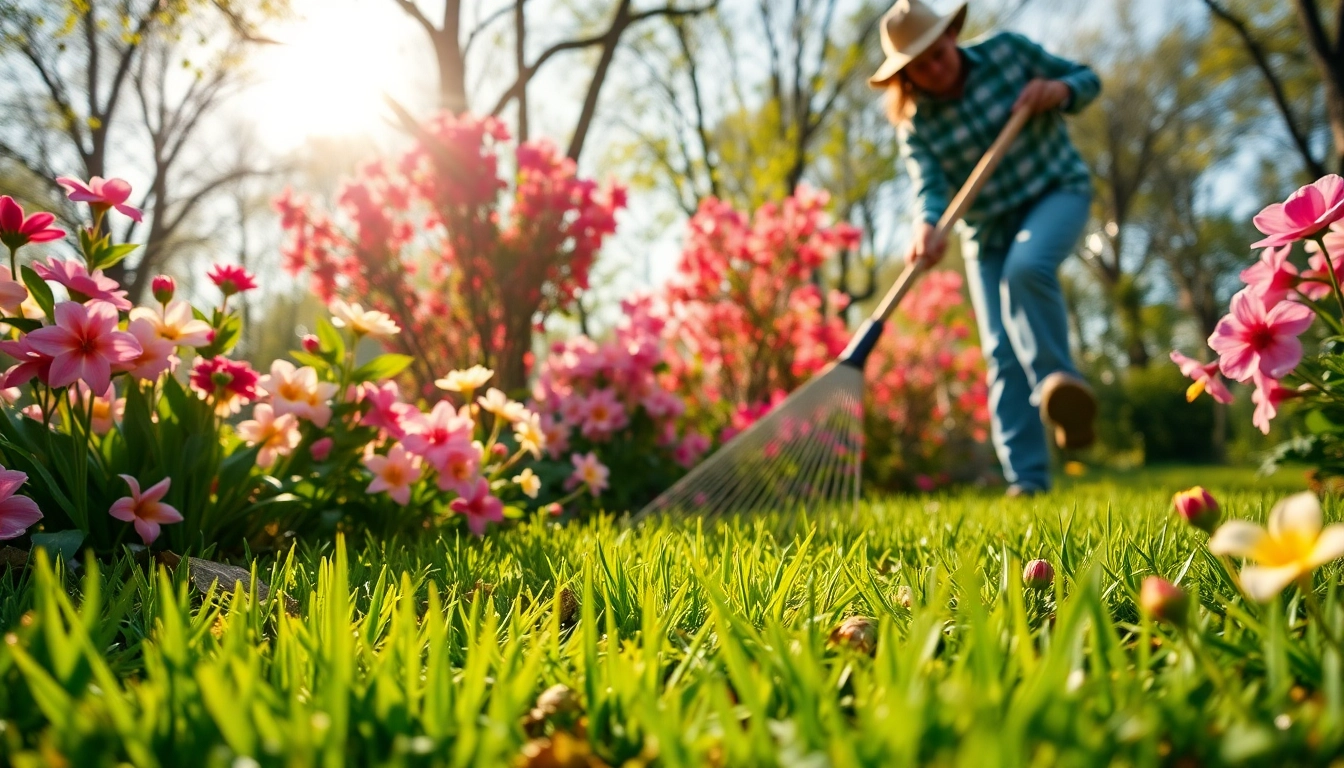Understanding the Importance of Spring Clean Up
As the cold winter months give way to the vibrant colors of spring, yards and gardens demand attention. A thorough spring clean up is not merely an act of landscaping; it’s an essential ritual that revitalizes our outdoor spaces, promotes the health of plants, and sets the stage for a flourishing garden. Understanding the nuances of spring clean up is crucial for homeowners and garden enthusiasts alike.
What is Spring Clean Up?
Spring clean up refers to the series of tasks performed in the garden after winter that prepares it for the growing season. This task can include removing debris like fallen leaves, branches, and dead plants; assessing plant health and making necessary cuts; and preparing the soil for new growth. Spring clean up not only tidies the garden but also encourages optimal health for the plants and soil.
Benefits of a Seasonal Cleanup
The benefits of a seasonal cleanup extend far beyond mere aesthetics. Here are several key advantages:
- Promotes Healthy Growth: By removing dead plant material and debris, you allow the soil to breathe better and facilitate healthier plant growth.
- Pest Control: Cleaning up decaying leaves and rotting fruits can help deter pests, reducing the likelihood of infestations later on.
- Improved Aesthetics: A well-tended garden looks beautiful, enhancing the overall appeal of your home.
- Soil Preparation: Incorporating compost and aeration into your spring clean up can significantly improve soil health, leading to better water retention and nutrient absorption.
Common Mistakes to Avoid
While performing a spring clean up, it’s easy to overlook important details. Here are some common pitfalls:
- Cleaning too early: It’s essential to wait until the danger of frost has passed, especially for tender perennials.
- Removing too much plant material: Some plants benefit from being left intact over the winter to protect their roots.
- Ignoring soil health: Focusing strictly on plant maintenance while neglecting the soil can lead to long-term issues.
- Not assessing plant health: Failing to evaluate the condition of plants can result in missed opportunities for revitalization.
Essential Tools for Effective Spring Clean Up
Having the right tools can make all the difference when preparing your yard for spring. Here’s a look at the must-have equipment for efficient spring clean up.
Must-Have Gardening Tools
Investing in quality gardening tools is crucial. Here’s a checklist of essential tools:
- Rakes: Ideal for clearing leaves and debris from the yard.
- Pruning Shears: Necessary for trimming back overgrown plants and shrubs.
- Shovels: Essential for moving soil and mulch.
- Garden Forks: Useful for aerating the soil and mixing in compost.
- Gloves: Protect your hands while working to prevent injuries and irritations.
Safety Equipment and Gear
While working in the yard, safety should be a priority. In addition to gloves, consider these items:
- Sunscreen: Protect your skin from harmful UV rays.
- Safety Glasses: Keep your eyes safe from debris.
- Sturdy Footwear: Use boots that provide adequate support and protection.
Organizational Supplies
As you organize your seasonal clean-up, consider these supplies to enhance your efficiency:
- Buckets or Bins: For collecting debris.
- Garden Waste Bags: For easy disposal of plant material.
- Labels: Helpful for organizing tools and supplies, especially if you’re managing a larger garden.
Step-by-Step Guide to Your Spring Clean Up
With the right tools at your disposal, you’re ready to tackle your spring clean up. Here’s a step-by-step approach to ensure a thorough process.
Preparation of the Area
Start by surveying your yard. This preparation step involves:
- Assessing the overall condition of the plants and soil.
- Identifying areas that require more attention.
- Creating a to-do list based on priority tasks.
Executing the Cleanup
Now it’s time to roll up your sleeves. Follow these steps during the execution phase:
- Clear Debris: Rake leaves and gather any debris scattered across the lawn and garden beds.
- Trim and Prune: Cut back any perennials, shrubs, and trees that need attention.
- Aerate the Soil: Use a garden fork or aerator to allow air to penetrate the soil.
- Mulch and Fertilize: Add a fresh layer of mulch and apply organic fertilizers to enrich the soil.
Post-Cleanup Maintenance
After completing the spring clean up, don’t forget about post-cleanup tasks:
- Regular Monitoring: Keep an eye on new growth and any emerging pests.
- Maintain the Tools: Clean and store away your tools appropriately for future use.
- Set a Routine: Establish a regular maintenance schedule to keep your yard looking its best throughout the growing season.
Spring Clean Up Services: When to Hire Professionals
While many homeowners can handle their spring clean up, some situations may necessitate hiring professionals. Here’s how to know when you should consider professional help.
Identifying the Need for Help
There are several indicators that it may be time to hire a landscaping service:
- Overwhelming Sizes: If your yard is too large or overgrown to manage alone.
- Specific Skills Required: Certain landscaping tasks, such as tree pruning or complex landscaping, often require specialized knowledge.
- Health Concerns: If you have mobility challenges that hinder your ability to perform heavy lifting or use tools.
Cost Considerations
The cost of hiring a professional can vary significantly based on your location and the extent of the cleanup required:
- On average, costs range from $330 to $520 for varying services across different states.
- It is wise to obtain several quotes to ensure competitive pricing.
- Some professionals may provide bundled services that include spring clean up as part of a broader landscaping package.
Choosing the Right Service Provider
If you decide to hire professionals:
- Check Reviews: Verify credibility and quality of service through customer reviews.
- Inquire About Services: Ensure they include all tasks necessary for your spring clean up.
- Verify Insurance: Protect yourself from liabilities by choosing insured workers.
Eco-Friendly Practices for Spring Clean Up
In addition to revitalizing your yard, spring cleaning can be approached with eco-friendly practices. Here’s how to ensure your clean up is sustainable.
Composting Yard Waste
During your clean up, consider composting organic debris such as leaves, grass clippings, and small branches. Composting provides:
- Natural fertilizers that enrich the soil.
- A reduction in greenhouse gas emissions by minimizing waste in landfills.
Using Organic Products
When maintaining your garden, opt for organic fertilizers and pest control products. Benefits include:
- Promotion of healthier plant growth without harmful chemicals.
- A safer environment for pets and children playing outdoors.
Benefits of Sustainable Landscaping
Adopting sustainable landscaping practices during spring clean up can yield lasting benefits:
- Lower water consumption through drought-resistant plant selection.
- Enhanced biodiversity by creating habitats for local wildlife.
- Soil preservation techniques leading to healthier ecosystems.



